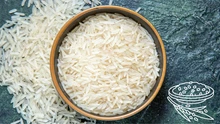
Cultivation of mushrooms in our country is slowly gaining popularity and in current times is considered as one of the most profitable businesses to do with bare minimum expenses and cultivation space.
Presently, there are three kinds of mushrooms that are grown in our country namely white or button mushrooms, oyster mushrooms and paddy straw mushrooms. Out of all the three kinds, white ones are the most popular and largely cultivated in India because of less expenditure. Paddy straw mushrooms grow between 35 to 45 degree Celsius; button or White mushroom grows in the cold climatic region and oyster mushrooms grow in the northern plains of our country.
Registration and Management of organic mushroom farming site:
The farmer has to submit an organic management plan to ACB (Accredited Certification Body) in order to register his or her farm. In return the ACB will verify the organic management plan and inspect the farm before giving the certification. The plan has to be updated yearly.
Any sort of non-organic farming has to remain separated from the organic farming site. Be it farming facility wise or any other machinery, tools, containers etc. Even the compost used in the process has to be organic in nature.

Organic compost:
Basic ingredients are horse dung, straw (wheat), gypsum and poultry manure. Freshly collected horse dung has to be mixed with finely chopped straws of wheat. The formed mixture has to even spread in the composting yard followed by sprinkling the mixture with water so as to wet the straws. The mixture is then heaped and kept like that for fermentation. Once you smell ammonia from the heap, that means the compost has opened. The heap has to be turned in every 3 days and the same has to be sprinkled with water. On the 3rd or 4th time of turning, around 25 kilos of gypsum has to be added for each ton of compost. During the final turn, spray the heap with 5 liter of water mixed with 10 milliliter of malathion.
Here is a step by step process on how to do mushroom cultivation
As far as strain for cultivation is concerned, the brown variety is the best and considered ideal and vigorous for cultivation. This variety resists better than the white and cream variety.
Spawn is the propagating material used for planting beds by the cultivators. The spawn quality directly resonates with the quality of mushroom to be produced. Another basic ingredient that matters in cultivation is the compost that is used for growth of the mushrooms. Few other factors that matters the most include containment temperature, humidity (ranging between 85 to 95 percent), ventilation and sterilization (by pasteurization at 37 degree Celsius).
First step begins with a compost yard in an open space. Concrete yards have to be prepared on raised platforms. Raised platforms won't let water accumulate into the heaps of compost. One more thing to consider is to cover the compost in the open so as to avoid rain spillage over the same.
Tray filling of compost:
The compost becomes dark brown with no smell or trace of ammonia whenever it is ready for spawning. Also the pH levels become neutral and the water content should be moderate before you put the compost in the trays. If the compost is dry, the same has to be sprayed with a bit of water to make it moist. If the water content is more, then the excess water has to be evaporated. The tray has to be at least 15 centimeter deep and the size has to be 100 X 50 X 15 CM. Softwood should be used for the trays and the same should be stacked on top of one another with the help of pegs.
Buying Organic Spawn
Spawns are grown fungal tissue used for growing mushrooms. Plug form spawn is used for the log method of cultivation. The seeds are a mixture of compost. The utensils are to be washed with formalin solution along with your hands before handling the seedlings. Now add seed into 0.5 to 0.75%, i.e. 100 Kg G500 to 750 gms of seeds.
Casing soil:
The pH levels for the casing soil has to be maintained within 7.5 and 7.8 and also should be free of diseases. Soil is loaded on top of the cemented ground and the same can be treated with 4 percent formalin. The same has to be covered with a polythene sheet for 3 to 4 days and pasteurization has to be done at 65 degree Celsius for a minimum of 7- 8 hours.
A thickness of 3 to 4 centimeter of casing soil has to be layered on the compost once the surface is covered with white mycelium of this fungus. Next thing is to spray formalin solution (0.5%) and also proper ventilation and spraying of water has to be maintained.
Pin Development:
Mushroom cultivation requires cold temperatures and best grows in the autumn season. The temperature has to be gradually reduced from 23 degree till 17 degree Celsius over a period of four days. You have to start reducing the temperature once you see mycelium growing to its full potential. The lowering of temperature triggers the mycelium into sprouting the mushrooms. Little buds tend to form which later develops into mushrooms. These little buds are called pins and air temperature and humidity plays a major part in its growth.
Pest and Disease control:
Major pests include Cecid fly, Phorid fly, Sciarid fly, Nematodes. Proper sanitation should be followed in mushroom farming through pasteurization of the soil medium before a fresh crop is grown. Pasteurization kills the insects, nematodes, pest fungi and any other pests that might be living on the inside the compost.
Dactylium disease:
If the mushroom is infected, then it will develop a soft and watery rot. Proper sanitation in all aspects must be maintained in order to control this disease.
Green mould:
Mycelium colour changes to green and the developing mushroom tends to crack and look distorted. Good sanitation along with thorough pasteurization of compost can help in controlling the disease.
Verticillium spot:
Spotting on the mushroom can be observed along with deformity. Even the surface develops a grey colour. Salt should be used to destroy the disease.
Pasteurization and Sanitization:
Proper sanitation should be followed in mushroom farming through pasteurization of the soil medium before a fresh crop is grown. Pasteurization kills all sorts of pests living inside the compost. Proper pasteurization requires the temperature to be raised till 60 degree Celsius for a time frame of around 4 hours. Do not go for higher temperatures as it can negatively impact the good microbes.
Cost with regards to Organic Mushroom:
The cost with regards to Organic mushroom is approximately Rupees 200 per kilo.
Harvesting:
Best way to harvest mushrooms is to carefully twist the same at the soil level or by cutting with the help of a knife at the soil level. Simply pulling the mushroom can lead to further complications for the nearby mushrooms. The mushroom beds produce mushrooms till 6 months and daily harvesting is to be done.
After this, you have to keep the temperature constant at 18 degree Celsius for proper growth of the mushrooms. Harvesting has to be done when the height reaches 3 cm. Hand picking is best for harvesting.










